
Travelling through the Eifel mountains with a four-axle truck: Rudolf Magel driving his Arocs tank truck
Vehicle & Technology
Rudolf Magel delivers diesel fuel to quarries and construction sites. It's a good thing his Arocs is equipped with Hydraulic Auxiliary Drive.
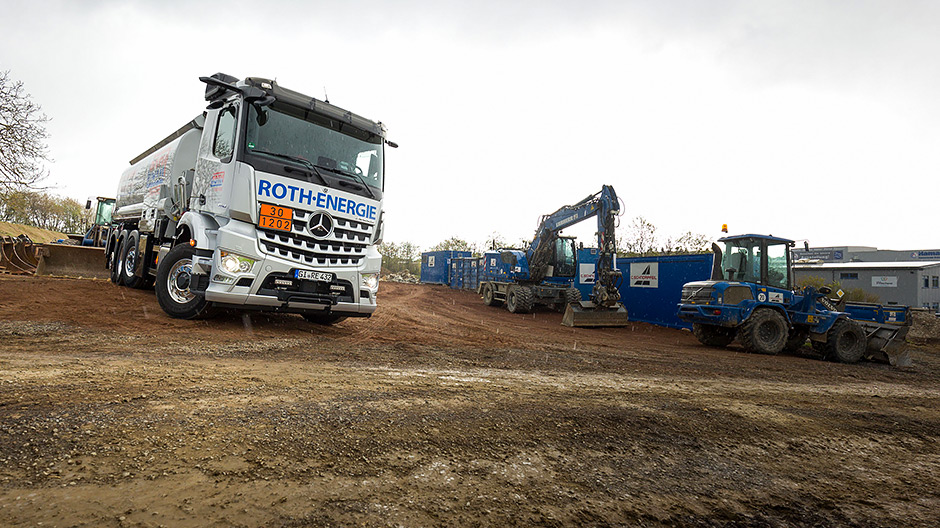
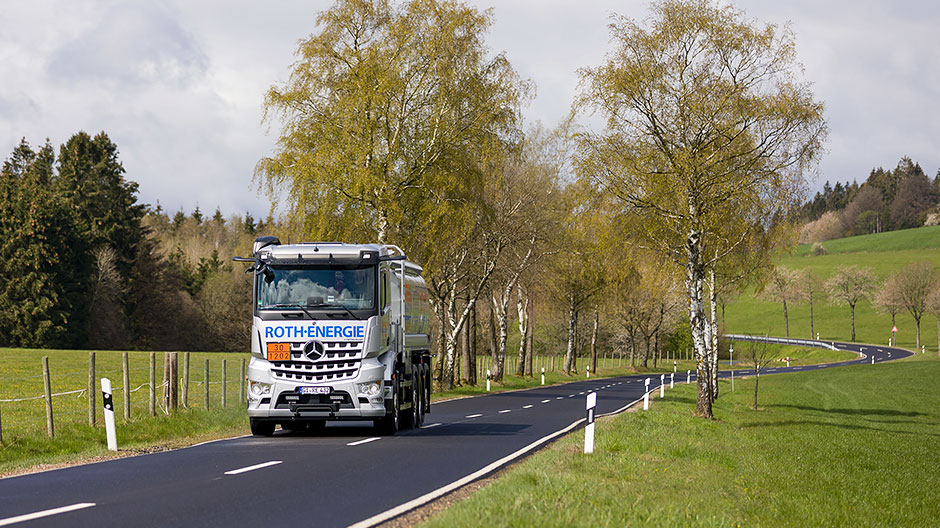
Rudolf Magel, or Rudi for short, locks the connections of the tank body of his Arocs again and climbs into the dry cab. He just managed to fill up his tank truck before the hailstorm started. Rudi sets off for his first destination. He's taking the new acquisition of Adolf Roth GmbH to a lava quarry. That's just the right terrain for the Arocs 3245 8x4 with a tank body and Hydraulic Auxiliary Drive.
At the lava quarry.
Because every kilogramme of payload counts for tank trucks, at Roth they chose not to install permanent or engageable all-wheel drive. All the same, it was important to be able to deliver to construction sites, quarries and other difficult terrain.
This article contains additional material (videos, images and reports etc.) for registered RoadStars members. In order to experience the article to the full, you need to log in with your RoadStars account or register for one free of charge.
Become a RoadStar and gain access to exclusive content and campaigns!
Login for RoadStars members
Not yet a member? Join RoadStars now
Obtain exclusive access to exciting events and activities which only RoadStars can offer.
Join RoadStarsRudi has arrived at the lava quarry and he drives straight into the middle of the quarry, past huge diggers that are removing the millennia-old lava and loading it onto equally large dump trucks. Rudi takes the required diesel fuel for the machinery directly to the vehicle.
“Sometimes we have to go to places where only heavy-duty machinery goes,” says the driver who usually drives an Actros – without the extra help from a Hydraulic Auxiliary Drive. He reverses, manoeuvring the Arocs into the quarry. When he leaves, he activates the Hydraulic Auxiliary Drive and depresses the accelerator again. The four-axle truck begins to move immediately and easily overcomes the incline ahead.
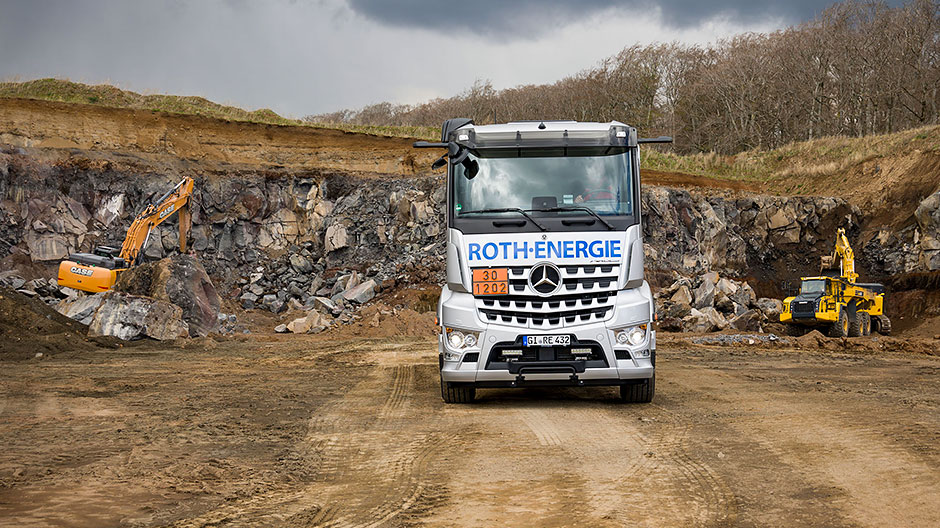
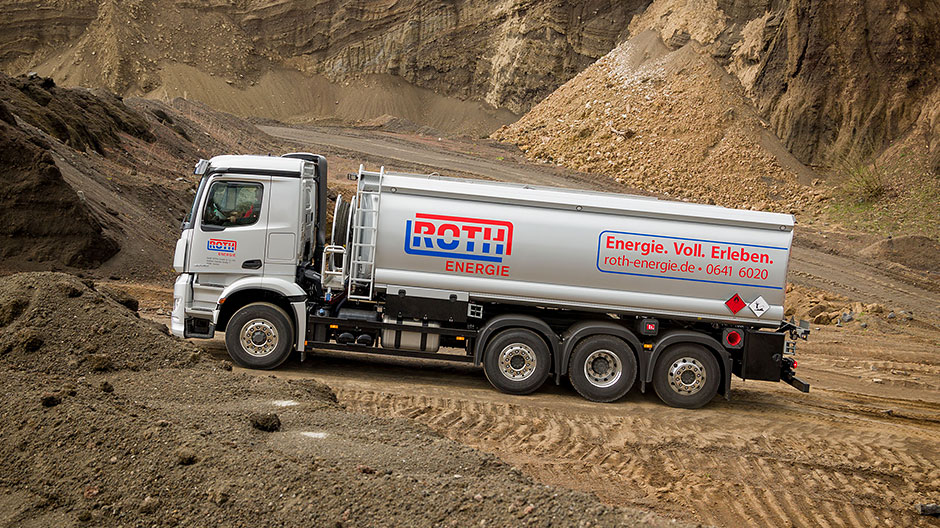
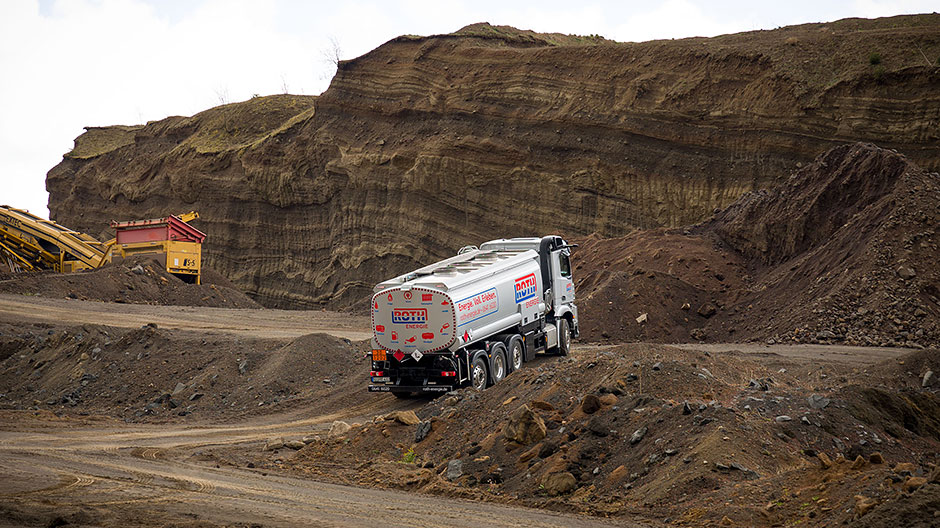
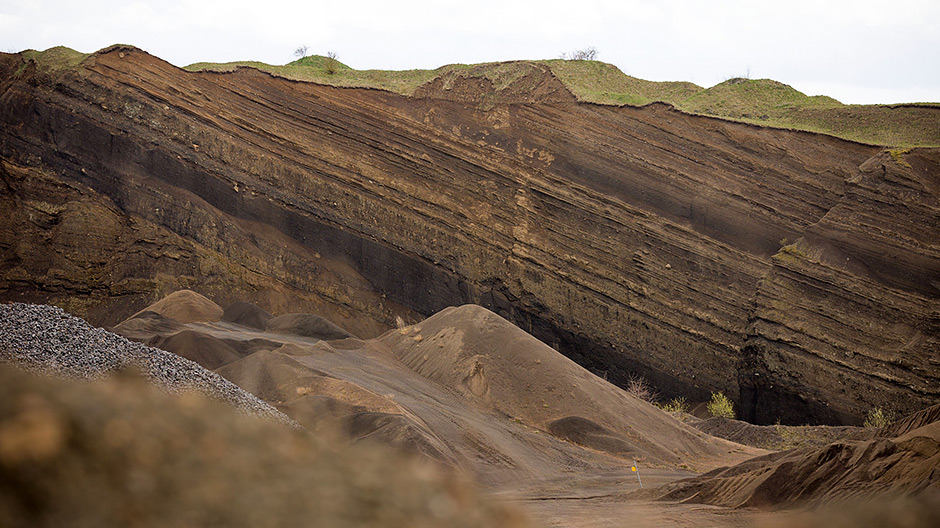
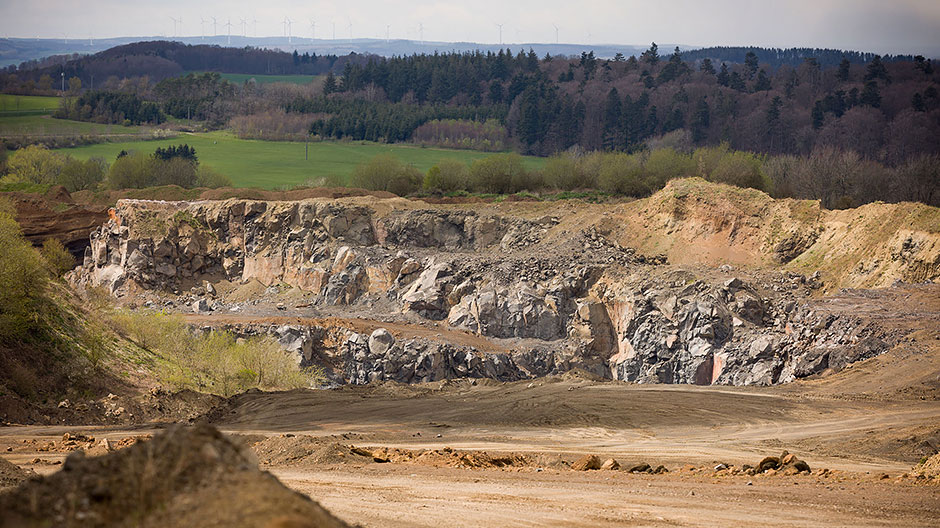
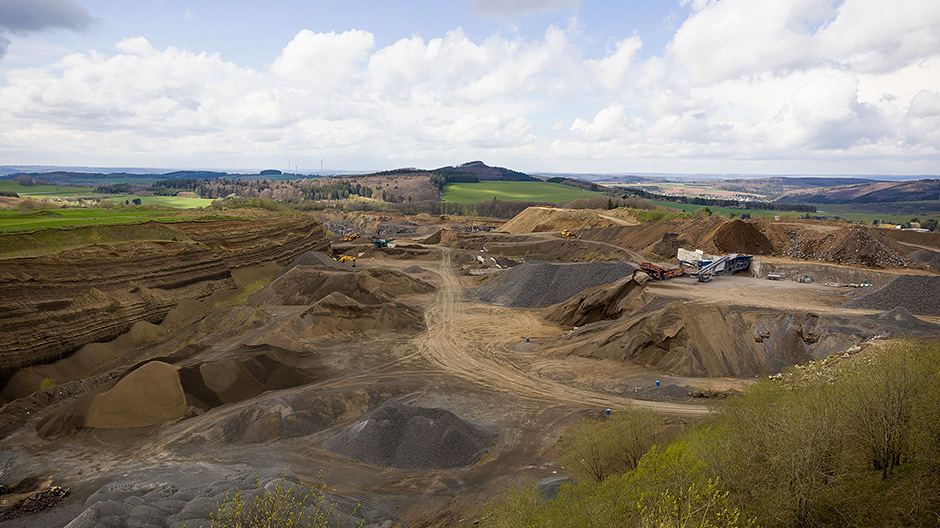
Next stage: a road construction site.
A new industrial estate is being built a few villages away. Here the construction vehicles are digging through the clay-like ground. Or maybe not – when Rudi arrives they are just taking a break on the construction site. The tractors that take the earth away from construction site every minute would otherwise spread too much sticky wet mud on the surrounding roads. Rudi switches on the starting-off aid again and works his way forward to the construction site filling station, where the building machines take their diesel fuel.
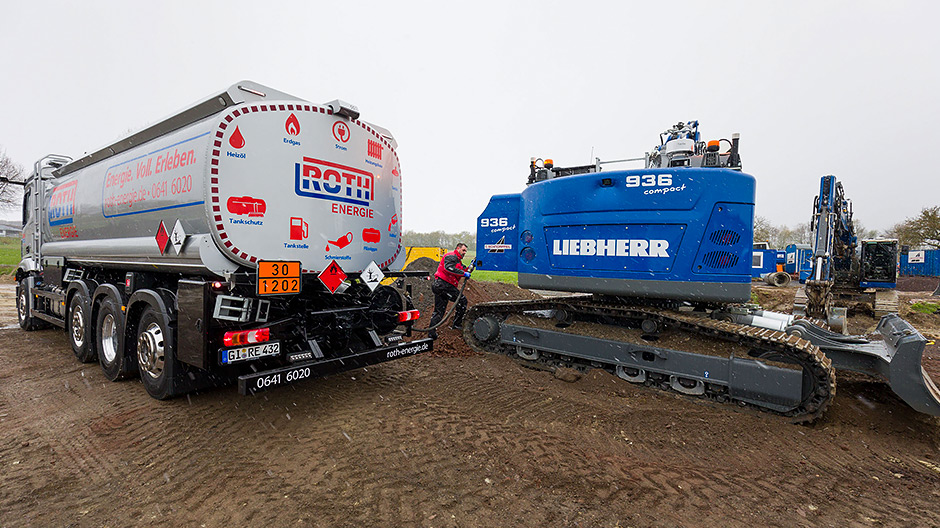
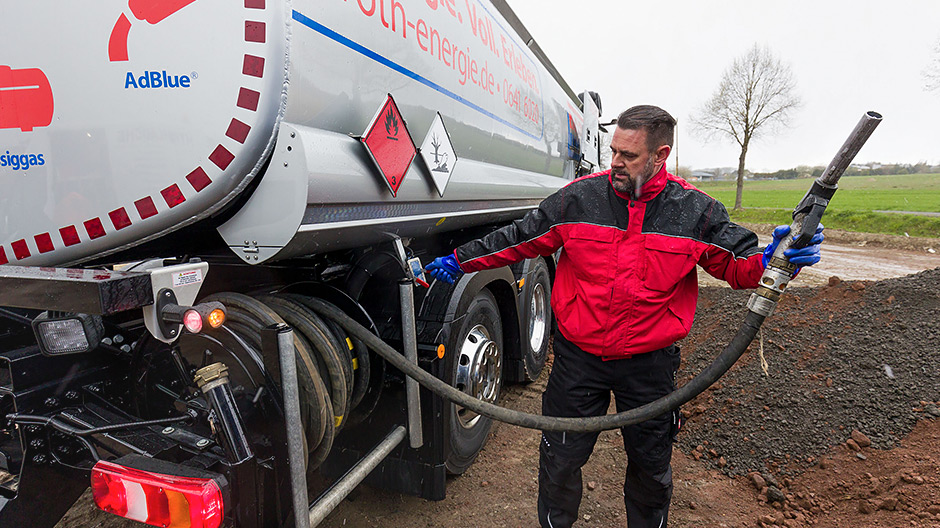
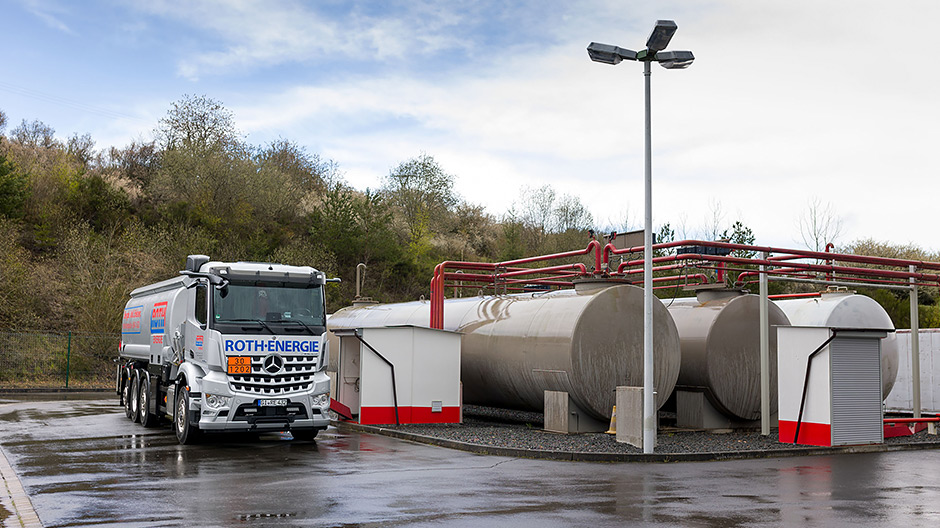
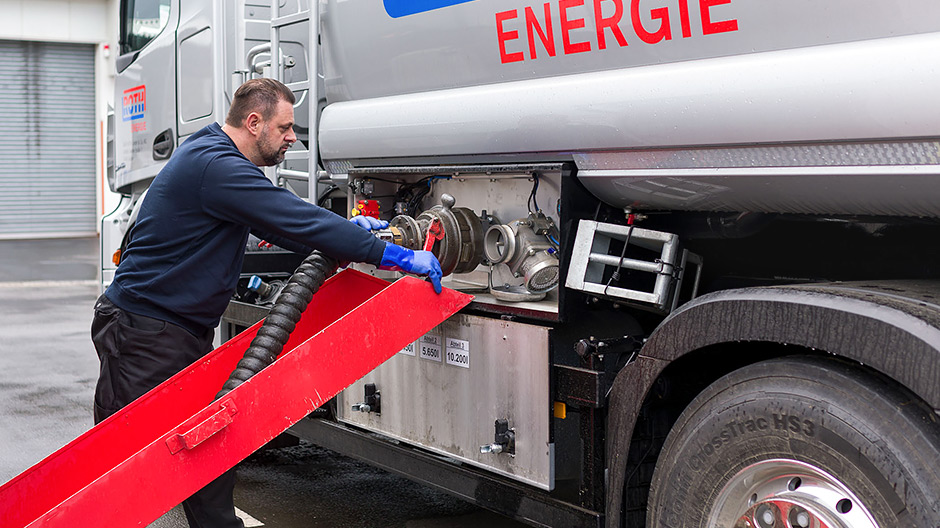
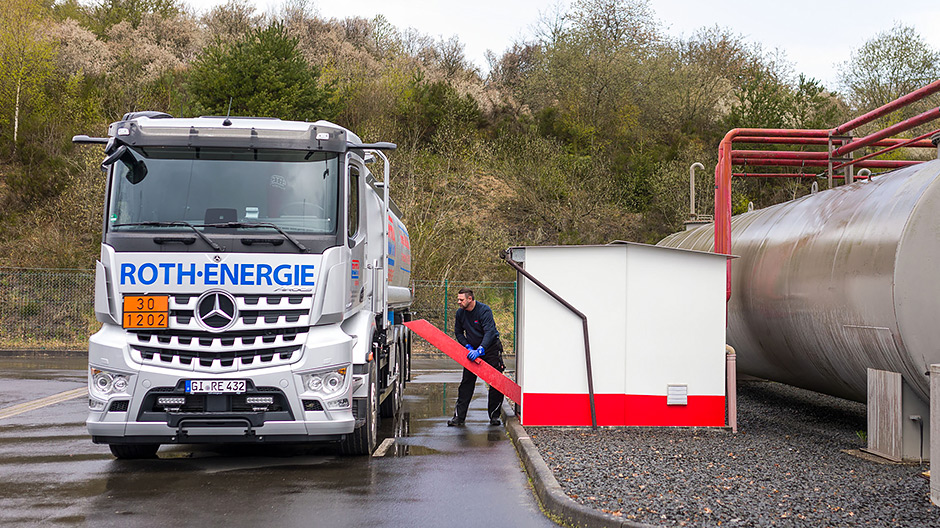
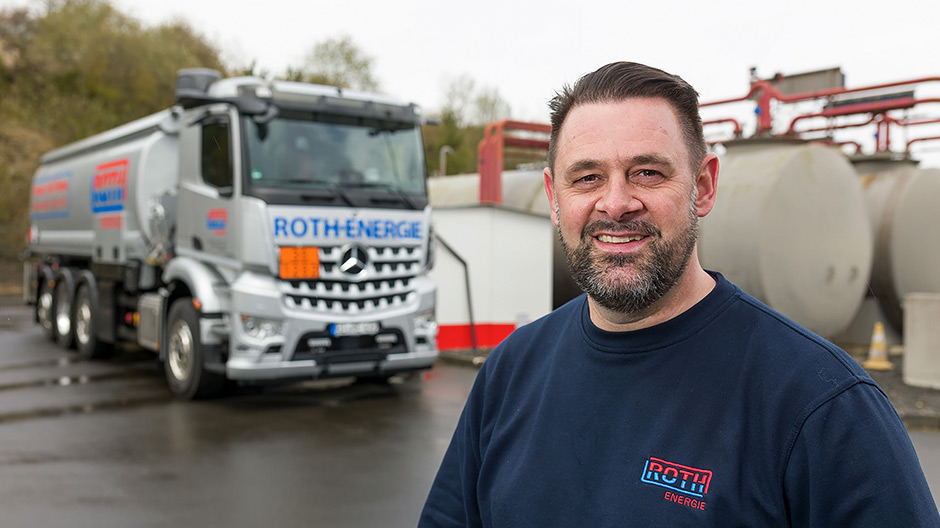
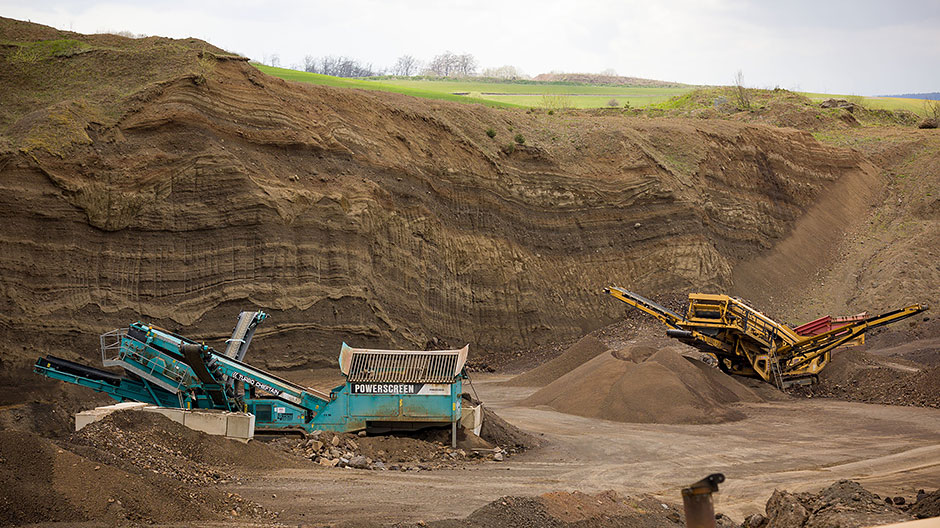
First four-axle Arocs in the fleet.
Then he returns to the headquarters of Adolf Roth GmbH & Co.KG in Daun, the main town in the Vulkaneifel region. Rudi is delighted with his first trip with the four-axle Arocs. He was impressed not only by its off-road capability, but also by the extensive safety equipment such as Active Brake Assist, which he already knows from his Actros.
“Active Brake Assist has already saved me from an accident twice. It's really worth its weight in gold,” says Rudi, who has been driving trucks for more than 20 years.
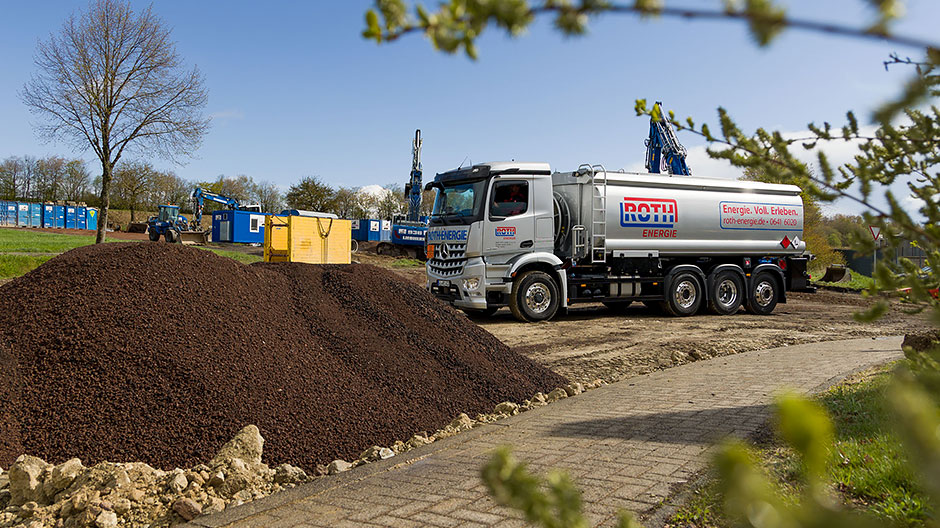
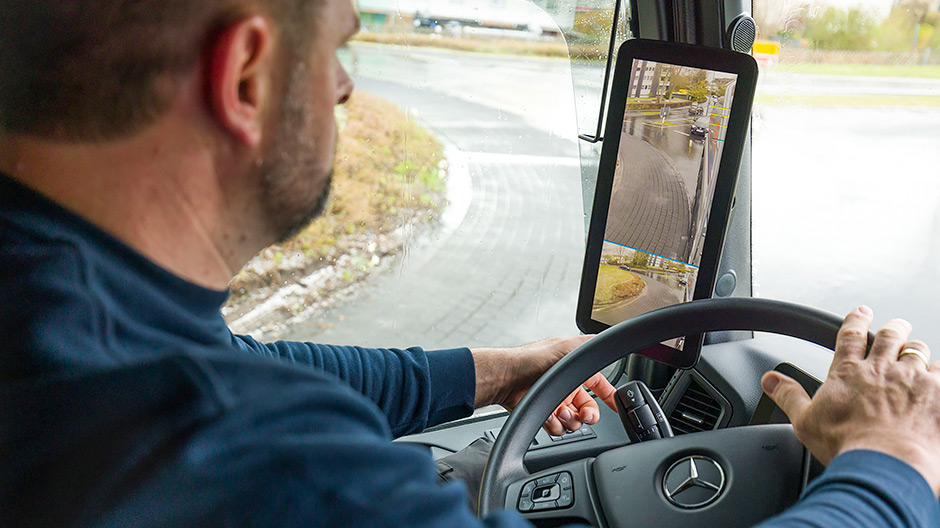
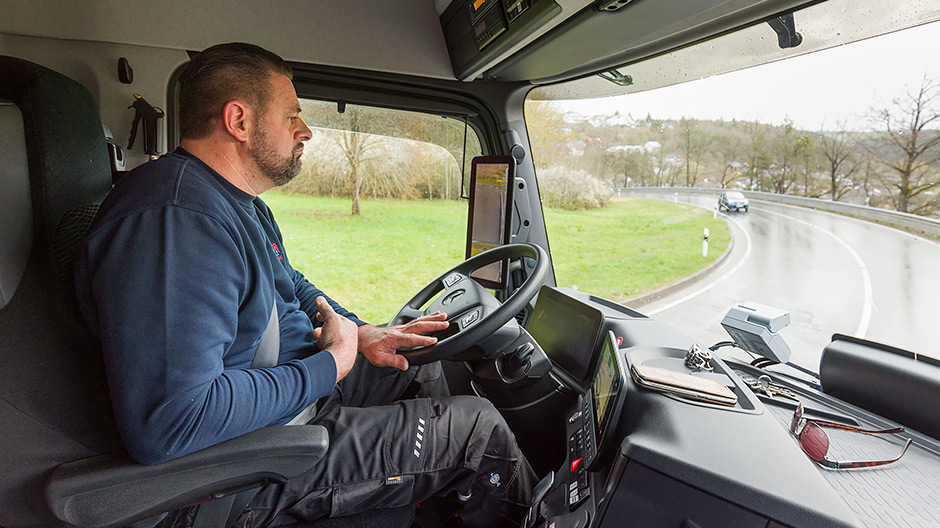
The Arocs 3245 8x4 is still a unique specimen at the Roth Energie fleet – but if Rudi now tells his workmates about his experience with the drive, the four-axle truck probably won't remain the only truck with this equipment in the fleet.
Lava from the Eifel region.
45 million years. That’s how long there have been volcanoes in the Eifel region. An unimaginable length of time. The last major eruption took place around 11,000 years BCE. It resulted in the Laach Lake west of Koblenz. At the time a cloud of ash around 40 kilometres high must have hung over the volcano. Almost 15 cubic kilometres of pumice and ash were spread across the surrounding countryside which characterises the geology even now. For centuries, the resulting rock was an important part of the lives of the Eifel region’s inhabitants, and that is still the case today. Due to their composition lava rock aggregate and basaltic rock are an important part of pipework, road construction and civil engineering – as a stabilising layer, to cover cables and pipes, as a filter layer and as frost protection.
Photos and video: Jan Potente




Comment
Please log in to post a comment.
7 comments
Der Artikel ist euch mal wieder sehr gut gelungen weiter so 😁👍
Der Artikel ist euch mal wieder sehr gut gelungen weiter so 😁👍
@Richard......da hast du recht, die "neuen" Vierachser sind gewöhnungsbedürftig! 😄👍
@Richard......da hast du recht, die "neuen" Vierachser sind gewöhnungsbedürftig! 😄👍
👍👍👍👍👍👍⛟😎🤘
👍👍👍👍👍👍⛟😎🤘